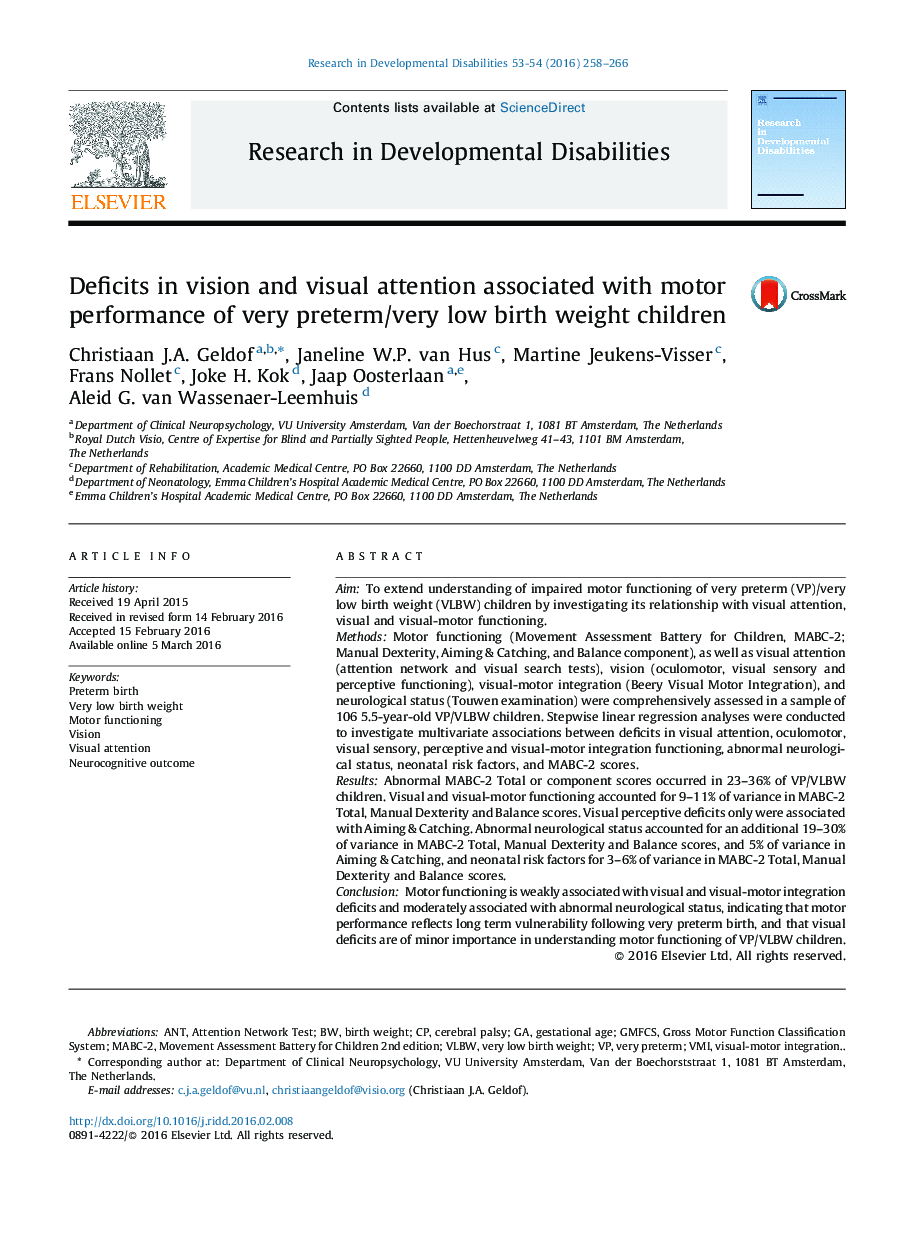| Article ID | Journal | Published Year | Pages | File Type |
|---|---|---|---|---|
| 370985 | Research in Developmental Disabilities | 2016 | 9 Pages |
•Very preterm/very low birth weight (VP/VLBW) children have difficulties in motor functioning.•VP/VLBW children also have impaired visual attention, visual and visual-motor functioning.•Oculomotor, visual and visual-motor deficits are weakly associated with motor performance.•Abnormal neurological status is moderately associated with motor functioning.
AimTo extend understanding of impaired motor functioning of very preterm (VP)/very low birth weight (VLBW) children by investigating its relationship with visual attention, visual and visual-motor functioning.MethodsMotor functioning (Movement Assessment Battery for Children, MABC-2; Manual Dexterity, Aiming & Catching, and Balance component), as well as visual attention (attention network and visual search tests), vision (oculomotor, visual sensory and perceptive functioning), visual-motor integration (Beery Visual Motor Integration), and neurological status (Touwen examination) were comprehensively assessed in a sample of 106 5.5-year-old VP/VLBW children. Stepwise linear regression analyses were conducted to investigate multivariate associations between deficits in visual attention, oculomotor, visual sensory, perceptive and visual-motor integration functioning, abnormal neurological status, neonatal risk factors, and MABC-2 scores.ResultsAbnormal MABC-2 Total or component scores occurred in 23–36% of VP/VLBW children. Visual and visual-motor functioning accounted for 9–11% of variance in MABC-2 Total, Manual Dexterity and Balance scores. Visual perceptive deficits only were associated with Aiming & Catching. Abnormal neurological status accounted for an additional 19–30% of variance in MABC-2 Total, Manual Dexterity and Balance scores, and 5% of variance in Aiming & Catching, and neonatal risk factors for 3–6% of variance in MABC-2 Total, Manual Dexterity and Balance scores.ConclusionMotor functioning is weakly associated with visual and visual-motor integration deficits and moderately associated with abnormal neurological status, indicating that motor performance reflects long term vulnerability following very preterm birth, and that visual deficits are of minor importance in understanding motor functioning of VP/VLBW children.
